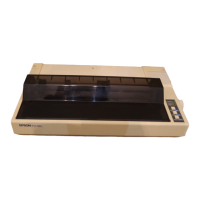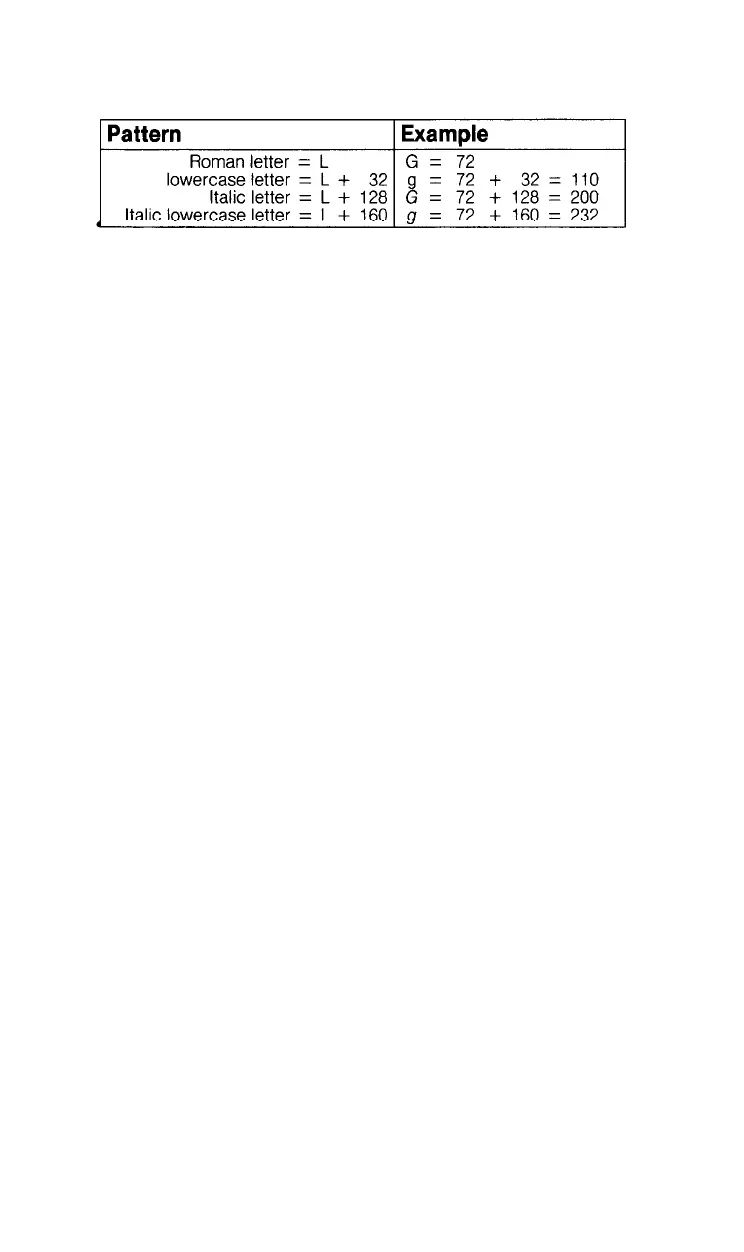Table
16-1.
ASCII pattern
With this in mind, add these lines:
40
READ L: PRINT CHR$(L) ' Print to screen
50 FOR Y=0 TO 1: FOR Z=0 TO 1: A=L+128*Y+32*Z
and make these changes:
60
LPRINT CHR$(27)"&"CHR$(0)CHR$(A)CHR$(A);
70 LPRINT CHR$(139);
90
NEXT Z: NEXT Y
Line 50 calculates the code (A), to be defined in line 60, by adding
the appropriate amount to the base letter L. Line 60 is the
CHR$(27)
“&” defining sequence, and line
70
sets the attribute byte to
139.
The code for the letter to be defined and the data for its four compo-
nents are stored in DATA statements. Delete lines 200-210 and type:
250 ’ G
260 DATA 71
270 DATA 0,15,16,0,32,31,64,0,64,0,64
280 DATA 64,4,72,2,32,2,24,4,0,0,0
290 DATA 0,120,4,0,2,124,1,0,10,1
300 DATA 1,64,0,124,2,68,8,120,0,64,0
Here’s the printing routine:
100 A$="":
INPUT "ENTER A STRING ",A$:
IF A
$=""
THEN
ia0
110 INPUT "ENTER A MASTER PRINT MODE NUMBER ",M
120 LPRINT CHR$(27)"!"CHR$(M);
130 FOR Y=0 TO 1: FOR X=1 TO LEN(A$)
140 A=ASC(MID$(A$,X,l))+l28*Y
150 LPRINT CHR$(A)CHR$(A+32);
160 NEXT X: LPRINT: NEXT Y
170 LPRINT
Some BASIC systems do not support the MID$ statement-instead
they use subscripts to isolate portions of a string. To designate the
219

